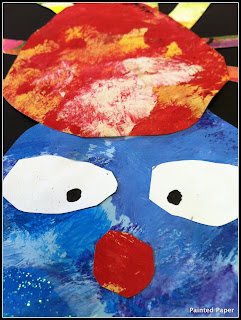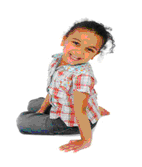One of the things we tend to do a lot in our program is to make our own supplies- or do what we can to stretch those that are commercially purchased.
 |
| Making Homemade Play Dough |
Our dough is soft and pliable- perfect for sculpting and working on those fine motor skills!
 |
| Clay Dough |
When we decide that we are interested in keeping a sculpted product- we tend to use clay dough, this simple dough is much smoother and dries with less cracks than traditional salt dough recipes. It is also bright white in color which we love!
 |
| Scented Watercolors |
We also make a wide variety of our own paints. Lately, we have been using a lot of watercolors! Our favorite recipe was one we adapted to make the colors scented.
 |
| Dried markers will make great homemade liquid watercolors! |
When we do use commercially purchased paint- like tempera, I tend to use only a small amount of paint and add liquid laundry starch to the paint pots. This will thin the paint a bit and make it shiny! (I usually use about 3/4 starch and 1/4 paint) It makes our paint last much longer and keeps it from cracking when dried!
 |
| Homemade Finger Paints |
We also use a lot of finger paint! This one is a fun recipe- but beware, it does not last. You cannot store this paint for a long period of time as it will mold.
We also tend to go through a lot of sidewalk chalk and sidewalk paint. I have not found making your own sidewalk chalk to be as cost effective as buying it in the store. However- we do make sure to use up every little bit of chalk. When the pieces become stubs- rather than throwing them out- we use hammers to smash them into powder on a wet sidewalk! The results are brilliant- vibrant colors everywhere!
When we don't have a lot of bits at the moment and are tired of regular sidewalk chalk-
 |
| Make Your Own Sidewalk Paint |
We make our own homemade sidewalk paint!
If you want to add a bit of science to the mix- you can
and/or you can add pendulums to the mix!
 |
| Pendulum Painting with Sidewalk Paint! |
We like to recycle a lot too-
This version is completely handmade- no electric appliances are used! The children love to make the paper and to use it for new art creations!
Do you make your own art supplies?
Do you have a favorite recipe?
I'd love to hear about it - Please share in the comments!
 |
| More About Amy |
Amy Ahola is the owner/operator of Child Central Station, group home daycare in Marquette, Michigan. She has been running her own business since 2005. Prior to that time, Amy worked in a childcare center and public school. In addition to her childcare business, Amy also provides educational training sessions. Amy earned a Bachelors of Science in Psychology from Northern Michigan University and a M.S. in Training, Development, and Performance Improvement. For more information about any of her programs, please visit Child Central Station, AmyAhola.com or Find her on Facebook, Pinterest, LinkedIn, Google+, Instagram, Twitter, or Tumblr!


.jpg)





























